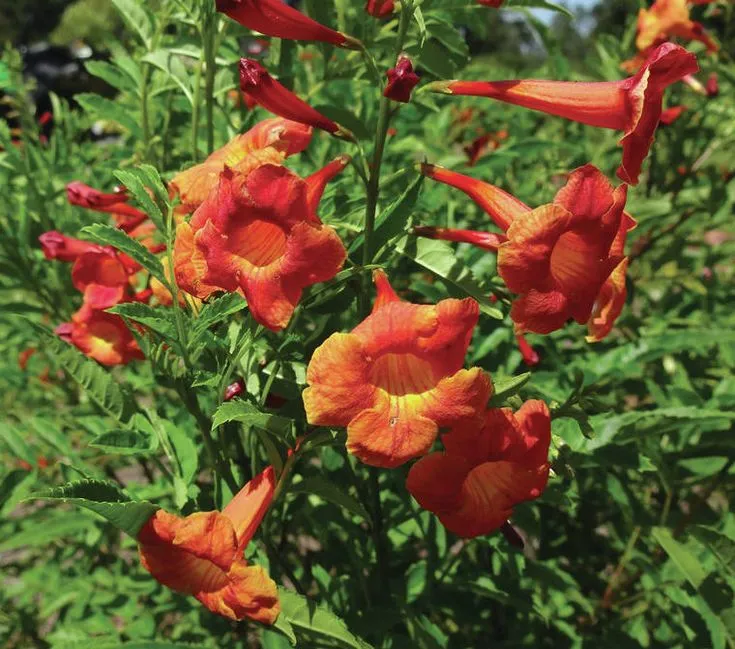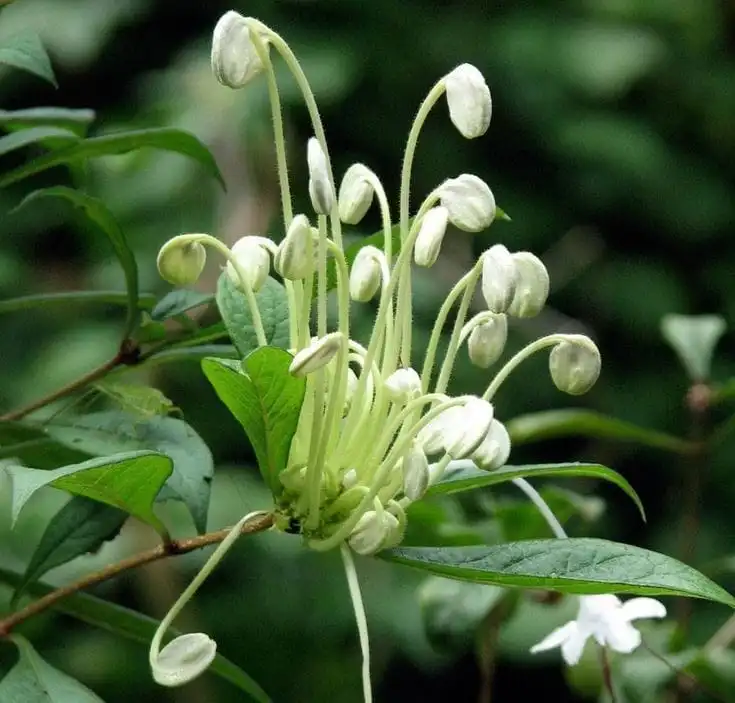Benefits of Sago Palm (Cycas revoluta)
The Sago Palm, scientifically known as Cycas revoluta, is a striking and ancient plant that belongs to the cycad family. Despite being called a “palm,” the Sago Palm is not a true palm tree but rather a gymnosperm—a primitive plant group that dates back to the time of dinosaurs. Native to southern Japan and parts of China, the Sago Palm is admired worldwide for its unique appearance, low maintenance, and versatility. It has gained popularity not just as an ornamental plant but also for its range of ecological, aesthetic, and even medicinal benefits.
In this comprehensive guide, we will explore the numerous benefits of the Sago Palm (Cycas revoluta)—ranging from landscaping appeal and indoor air improvement to cultural significance and conservation importance.
The Sago Palm (Cycas revoluta) is a plant of remarkable beauty, resilience, and significance.
1. Aesthetic and Ornamental Value
One of the main reasons why the Sago Palm is so widely cultivated is its decorative appeal.
● Distinctive Appearance
The Sago Palm features a crown of shiny, dark green fronds that radiate from a thick, shaggy trunk. Its symmetrical growth pattern and tropical look make it ideal for gardens, patios, and indoor spaces.
● Versatility in Landscaping
It fits well in various settings—whether in tropical landscapes, desert gardens, or Japanese Zen-style gardens. The plant is also suitable for container gardening, which allows for easy placement in entryways, balconies, or living rooms.
● Year-Round Beauty
Unlike many plants that lose their foliage in winter, the Sago Palm remains lush and green all year round, providing evergreen beauty in any climate where it can thrive.
2. Low Maintenance and Durability
Cycas revoluta is known for being a hardy and long-lived plant, making it a favorite among both amateur and professional gardeners.
● Drought Tolerance
Once established, Sago Palms require very little water and can survive prolonged dry periods, making them ideal for drought-prone areas.
● Pest Resistance
The plant is naturally resistant to most common pests and diseases. This quality reduces the need for chemical treatments and makes it an eco-friendly option.
● Longevity
Sago Palms are extremely long-lived, with some specimens surviving for hundreds of years in natural habitats. This makes them an excellent long-term addition to any landscape.
3. Indoor Air Quality Improvement
Though limited scientific studies have been done specifically on Cycas revoluta, many indoor plants are known to improve air quality by absorbing carbon dioxide and releasing oxygen.
● Natural Air Purifier
While not as efficient as some broadleaf plants, the Sago Palm contributes to cleaner air when used indoors. It can absorb small amounts of indoor pollutants and improve oxygen levels, especially in enclosed environments.
● Humidity Control
Sago Palms help maintain indoor humidity levels by releasing moisture through transpiration, which is particularly helpful during dry seasons or in air-conditioned rooms.
4. Erosion Control and Soil Stability
Cycas revoluta can be a useful addition in areas prone to soil erosion.
● Root System Benefits
The plant’s extensive and fibrous root system helps hold the soil together, reducing runoff during rains and promoting soil stability.
● Slope Landscaping
Its ability to grow on slopes makes it ideal for hilly or uneven terrains where erosion is a concern. It not only beautifies the area but also reinforces the landscape.
5. Cultural and Historical Significance
The Sago Palm holds deep historical and cultural importance in many Asian countries.
● Symbol of Longevity and Resilience
In Japanese culture, the Sago Palm symbolizes endurance, peace, and longevity. It is often planted near temples, shrines, and homes to bring good fortune and stability.
● Used in Bonsai
Due to its slow growth and compact form, Cycas revoluta is also popular in the Japanese art of bonsai. It can be shaped artistically and cultivated as a miniature tree with symbolic meaning.
6. Environmental and Ecological Contributions
Cycas revoluta plays a valuable role in biodiversity and conservation efforts.
● Ancient Plant Lineage
As a cycad, the Sago Palm belongs to one of the most ancient lineages of seed plants. Preserving it supports biodiversity and the study of plant evolution.
● Habitat for Microorganisms
The plant can host nitrogen-fixing cyanobacteria in its roots. These bacteria enrich the soil by converting atmospheric nitrogen into forms that other plants can use, benefiting surrounding flora.
7. Medicinal and Traditional Uses
In traditional medicine, various parts of the Cycas revoluta plant have been used with caution due to their toxic nature.
● Use in Traditional Remedies
In certain cultures, powdered parts of the plant are used in very small quantities in folk remedies for joint pain, digestive issues, and skin conditions.
⚠️ Warning: All parts of the Sago Palm, especially the seeds, contain cycasin and are highly toxic if ingested by humans or animals. Any medicinal use should only be done under the strict supervision of trained professionals.
8. Economic and Commercial Value
Beyond its ornamental use, the Sago Palm has economic significance in several ways.
● Horticulture and Landscaping Industry
The demand for Sago Palms is strong in the gardening and landscaping markets. Nurseries grow and sell them as potted specimens or large landscape trees.
● Export and Trade
Many countries with warm climates export Cycas revoluta as a high-value ornamental plant. It contributes to the local economy and international trade in exotic plant species.
Note:The Sago Palm (Cycas revoluta) is a plant of remarkable beauty, resilience, and significance.
9. Educational and Scientific Interest
Botanists, horticulturists, and students often study the Sago Palm for its unique characteristics.
● Living Fossil
Being a “living fossil,” the Sago Palm offers insights into ancient plant evolution. It is a valuable subject for botany students and researchers.
● Genetic Studies
The plant’s resilience and slow growth are of interest in genetic research for developing hardier plant species that can withstand environmental stressors.
10. Psychological and Wellbeing Benefits
Like many indoor plants, the Sago Palm offers several mental health benefits.
● Stress Reduction
Being around greenery has been proven to reduce stress, anxiety, and mental fatigue. The elegant symmetry of the Sago Palm adds to its calming presence.
● Productivity and Focus
Studies show that having plants in indoor workspaces can boost concentration and productivity. A Sago Palm in an office or study room can enhance the environment and mental clarity.
11. Space-Efficient and Adaptable Growth
Sago Palms are suitable for a wide range of spaces due to their adaptable nature.
● Indoor and Outdoor Suitability
They can be grown in both containers and the ground. Indoors, they require bright light and minimal watering, while outdoors they can thrive in full sun or partial shade.
● Compact Growth
Their slow and compact growth makes them ideal for small gardens or urban environments where space is limited.
12. Wildlife Value (With Caution)
Though toxic to pets and humans, some wild species have adapted to the presence of cycads like Cycas revoluta in their ecosystems.
● Insect Pollinators
Sago Palms are pollinated by specific insects, including certain beetles. These interactions support insect biodiversity in their native ecosystems.
● Food Source (Processed Form)
In some indigenous cultures, the seeds are detoxified through extensive processing to extract starch known as “sago.” However, this is done with extreme caution due to the inherent toxicity.
13. Symbolic Landscaping in Temples and Gardens
In spiritual and cultural contexts, Sago Palms are often used for symbolic landscaping.
● Sacred Gardens
They are commonly found in Zen gardens, temple courtyards, and other sacred spaces. Their structured appearance and ancient lineage align with themes of eternity and spiritual balance.
● Focal Points in Design
Landscape architects use Sago Palms as focal points in formal garden layouts due to their dramatic silhouette and symmetrical growth.
14. Resilience to Climate Variations
Sago Palms are known to tolerate a variety of climate conditions.
● Cold Resistance
While not frost-hardy, mature Sago Palms can tolerate brief exposure to cold temperatures down to -5°C (23°F), making them suitable for temperate climates with mild winters.
● Urban Tolerance
They can withstand pollution and urban heat, making them ideal for city gardens and public landscapes.
15. Gift and Decorative Use
Due to their compact size and elegant look, Sago Palms are increasingly popular as gifts and decorative plants.
● Housewarming Gifts
They symbolize strength and longevity, making them meaningful gifts for housewarmings, birthdays, or corporate occasions.
● Event Decoration
Used in weddings, garden parties, and interior decorations, Sago Palms add a touch of elegance and tropical charm.
Conclusion
The Sago Palm (Cycas revoluta) is a plant of remarkable beauty, resilience, and significance. Its low-maintenance nature, versatile applications in landscaping, and symbolic value make it a treasured plant across the globe. While its parts are toxic and should be handled with care, its benefits far outweigh its limitations when cultivated responsibly.
From air purification and soil conservation to its contribution to biodiversity, this ancient plant continues to enrich lives and landscapes in numerous ways. Whether you’re a gardening enthusiast, landscape designer, or nature lover, the Sago Palm is a plant worth appreciating for its many unique benefits.
Would you like this article formatted for a blog post or with SEO keywords added as well?









Leave a Reply